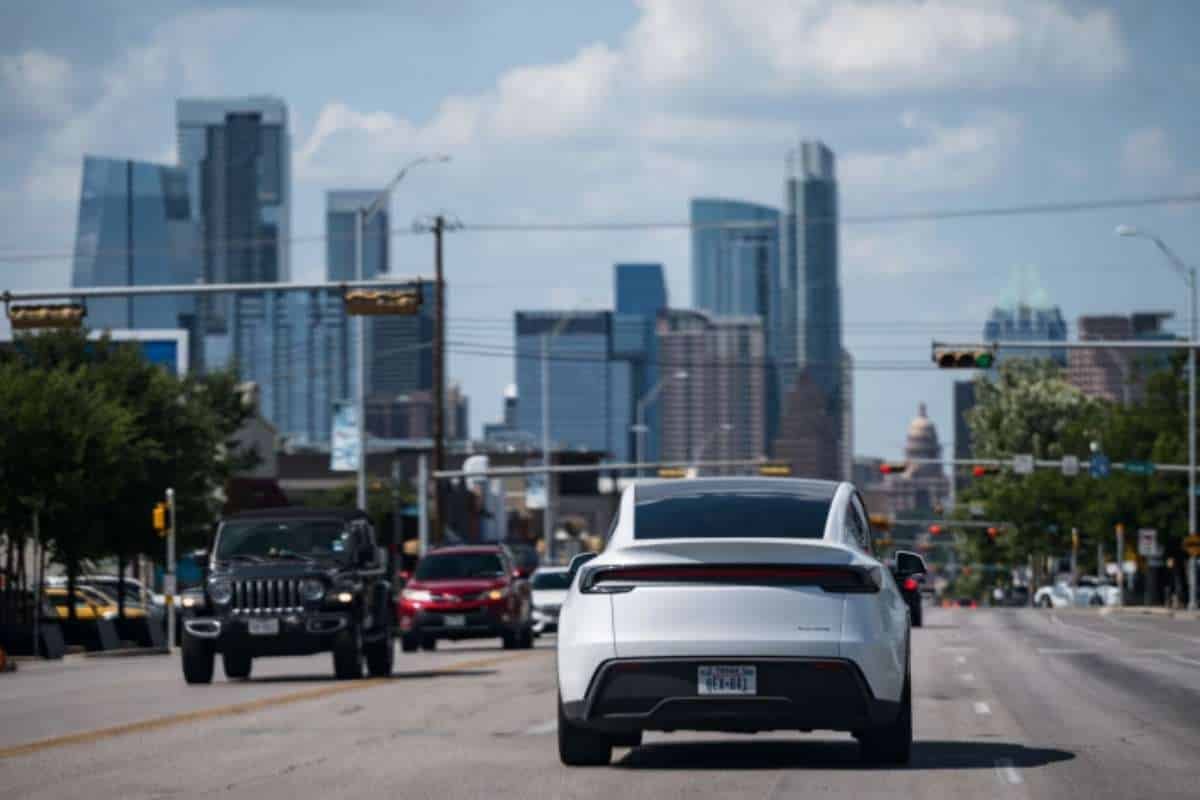On June 22, Tesla launched its highly anticipated robotaxi service in Austin, Texas, marking a significant step forward in its autonomous vehicle ambitions. However, the rollout comes with notable restrictions and raises questions about its readiness for public deployment.
The service, currently in pilot mode, is not available to the general public. Instead, Tesla has limited access to invited users, many of whom are known Tesla supporters. Each robotaxi has a company-employed safety monitor in the front passenger seat, a move diverging from standard industry practices where such personnel are typically only present during early testing. These vehicles operate only within a tightly geofenced section of Austin and avoid complex driving conditions like highways, poor weather, and airports. Tesla is also deploying backup measures, including remote operators and, in some cases, chase cars.
The pilot consists of 10–20 Model Y vehicles branded with “Robotaxi.” The fully autonomous Cybercab prototype, teased by Elon Musk last year, is not expected before 2026. According to Tesla’s website, rides are priced at a flat $4.20, a nod to Musk’s well-known internet humor. Despite the excitement, some invitees reported delays in accessing the robotaxi app, with several waiting well past the 1 PM ET launch time on Sunday.
Early Riders Report Smooth Rides but Reveal Operational Quirks
Early reactions have surfaced, primarily from influencers, giving the public its first glimpse into the experience. Riders described the journey as largely smooth and uneventful. The vehicles maintained speeds under 40 mph and handled typical urban driving scenarios like pedestrians, U-turns, and construction zones without notable issues.
Upon entering the vehicle, Tesla’s safety monitors requested app verification from riders but remained otherwise silent. The ride began via an animated “start ride” button either on the in-car display or on the mobile app. Riders were greeted with their Tesla profiles and music preferences preloaded onto the rear screen, while the front screen displayed a familiar Full Self-Driving (FSD) visualization. However, some controls common in consumer Teslas were reportedly missing.
One tester noted a situation where remote operator intervention was needed, though it wasn’t labeled a disengagement. Another tester reported a delay of nearly two minutes while waiting to connect to a support operator via the vehicle’s interface. Cellular connectivity during these support sessions appeared spotty in some instances.
Tesla also unveiled a dedicated robotaxi service page on its website during the launch, outlining guidelines and inviting users to register for future updates. A photo posted by Tesla’s Autopilot lead, Ashok Elluswamy, showed a control room with live feeds from operating robotaxis, suggesting the company’s robust internal monitoring during the pilot.
Tesla Faces Competitive, Regulatory Hurdles as Expansion Looms
While the Austin pilot is a key milestone, Tesla’s broader robotaxi ambitions face steep competition and regulatory scrutiny. Elon Musk has stated intentions to scale the service to California, a state known for its strict autonomous vehicle regulations. Despite suggesting a slow rollout, Musk also claims Tesla could have over 1,000 robotaxi service on the road “within a few months.”
This ambition places Tesla in direct competition with Waymo, Alphabet’s autonomous driving arm, which currently operates over 1,500 fully driverless vehicles in cities including San Francisco, Los Angeles, Phoenix, and Austin. Waymo plans to expand to Atlanta, Miami, and Washington, DC, and grow its fleet to 2,000 vehicles by 2026.
As Tesla continues its cautious yet ambitious deployment, all eyes are on how the company plans to transition from a tightly controlled pilot to a public, driverless future — and whether it can catch up with more established rivals in the space.
Visit Enterprise Wired for most recent information.










